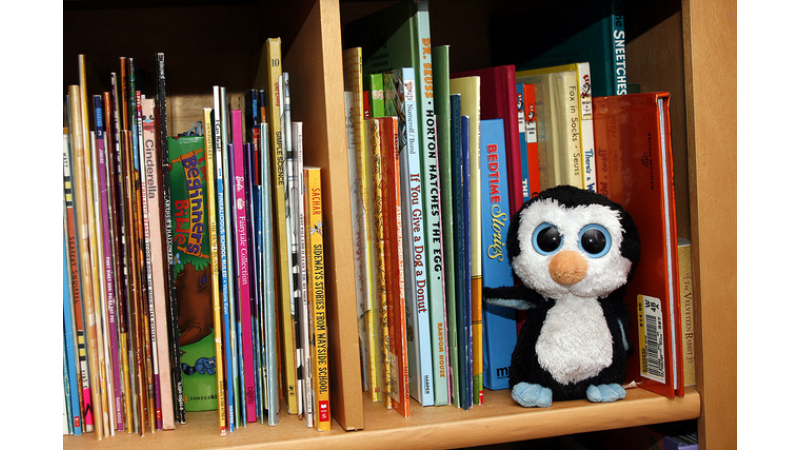 My almost-five-year-old will be starting kindergarten in the fall, and I've been talking to her often about how it will be so exciting when she learns how to read. She doesn't realize yet how much she relies on her dad and me to read things for her, and how wonderful and powerful she will feel when she can read independently.
My almost-five-year-old will be starting kindergarten in the fall, and I've been talking to her often about how it will be so exciting when she learns how to read. She doesn't realize yet how much she relies on her dad and me to read things for her, and how wonderful and powerful she will feel when she can read independently.
Even so, we read aloud to her every night before bed, and occasionally at other times of the day when we can manage it. Our read-aloud sessions are important bonding time with her, and I know from the Kids & Family Reading Report that 77% of parents also feel that this special time together is a top reason to love reading aloud.
When my daughter learns how to read next year, I fully intend to keep reading aloud to her. (I also know from Kids & Family Reading Report that for many families, the frequency of reading aloud drops significantly after age 5 and again after age 8.)
I've noticed lately though, as the parent of an (older) little kid, that there are read-aloud situations where I have to wing it a little bit. When she was littler, it was simple to choose books for her. The story would either appeal to someone her age, or it was too long/complex/abstract, and we would put them away for later. Now that she understands so much more about the world (and books) I am more thoughtful both in the selection and in the actual reading of the book.
For example: I recently ordered a book from a series we really like, but mistakenly got the board book version. It was simplified for someone much younger, with a single word on each page and not much narrative. But because the book featured favorite characters, and I had it right there in my hand, I decided to read it with her anyhow.
So in order to make it a bit more interesting for her, we practiced a little sounding-out since there was only one word on each page. Then we took the time to talk about how each word related to what was happening on the page. I had her describe the scene, relate the word to the illustrations and fill out the story a bit with her imagination.
The experience was more talking than reading, but I liked taking this new approach to our story time together.
Then last night, something happened that had never happened before. I'll be honest: we read a very strange new book that had an incomprehensible storyline, a lot of made-up nonsense words mixed in with English and a few Spanish words. A few pages in, I realized I had no idea what was going on in the story. My daughter didn't either. But I forged ahead!
It turned out that she really liked the illustrations and the imaginary language, and was interested when I translated the Spanish words for her. She wasn't bothered at all that we didn't know what happened in the story. When we were done, I realized it didn't bother me either; I liked the experience of being flexible with our reading, and not putting the book down just because we didn't get it.
These experiences have shown me that a little flexibility is really valuable when reading aloud now. For us, it doesn't have to be all about the story, or even follow the traditional read-aloud experience that we had so often followed before. Now I am even more excited to talk about what we're reading together!
Photo via anjanettew






